I am trying to construct Gremlin queries to use within DSE Graph with geo-searches enabled (indexed in Solr). The problem is the graph is so densely interconnected that the cyclic path traversals time out. Right now the prototype graph I'm working with has ~1600 vertices and ~35K edges. The number of triangles passing through each vertex also summarised:
+--------------------+-----+
| gps|count|
+--------------------+-----+
|POINT (-0.0462032...| 1502|
|POINT (-0.0458048...| 405|
|POINT (-0.0460680...| 488|
|POINT (-0.0478356...| 1176|
|POINT (-0.0479465...| 5566|
|POINT (-0.0481031...| 9896|
|POINT (-0.0484724...| 433|
|POINT (-0.0469379...| 302|
|POINT (-0.0456595...| 394|
|POINT (-0.0450722...| 614|
|POINT (-0.0475904...| 3080|
|POINT (-0.0479464...| 5566|
|POINT (-0.0483400...| 470|
|POINT (-0.0511753...| 370|
|POINT (-0.0521901...| 1746|
|POINT (-0.0519999...| 1026|
|POINT (-0.0468071...| 1247|
|POINT (-0.0469636...| 1165|
|POINT (-0.0463685...| 526|
|POINT (-0.0465805...| 1310|
+--------------------+-----+
only showing top 20 rows
I anticipate the graph growing to a massive size eventually but I will limit the searches for cycles to geographic regions (say of radius ~ 300 meters).
My best attempt so far has been some versions of the following:
g.V().has('gps',Geo.point(lon, lat)).as('P')
.repeat(both()).until(cyclicPath()).path().by('gps')
Script evaluation exceeded the configured threshold of realtime_evaluation_timeout at 180000 ms for the request
For the sake of illustration, the map below shows a starting vertex in green and a terminating vertex in red. Assume that all the vertices are interconnected. I am interested in the longest path between green and red, which would be to circumnavigate the block.

A few links I've read through to no avail:
1) http://tinkerpop.apache.org/docs/current/recipes/#cycle-detection
2) Longest acyclic path in a directed unweighted graph
3) https://groups.google.com/forum/#!msg/gremlin-users/tc8zsoEWb5k/9X9LW-7bCgAJ
EDIT
Using Daniel's suggestion below to create a subgraph, it still times out:
gremlin> hood = g.V().hasLabel('image').has('gps', Geo.inside(point(-0.04813968113126384, 51.531259899256995), 100, Unit.METERS)).bothE().subgraph('hood').cap('hood').next()
==>tinkergraph[vertices:640 edges:28078]
gremlin> hg = hood.traversal()
==>graphtraversalsource[tinkergraph[vertices:640 edges:28078], standard]
gremlin> hg.V().has('gps', Geo.point(-0.04813968113126384, 51.531259899256995)).as('x')
==>v[{~label=image, partition_key=2507574903070261248, cluster_key=RFAHA095CLK-2017-09-14 12:52:31.613}]
gremlin> hg.V().has('gps', Geo.point(-0.04813968113126384, 51.531259899256995)).as('x').repeat(both().simplePath()).emit(where(both().as('x'))).both().where(eq('x')).tail(1).path()
Script evaluation exceeded the configured threshold of realtime_evaluation_timeout at 180000 ms for the request: [91b6f1fa-0626-40a3-9466-5d28c7b5c27c - hg.V().has('gps', Geo.point(-0.04813968113126384, 51.531259899256995)).as('x').repeat(both().simplePath()).emit(where(both().as('x'))).both().where(eq('x')).tail(1).path()]
Type ':help' or ':h' for help.
Display stack trace? [yN]n
